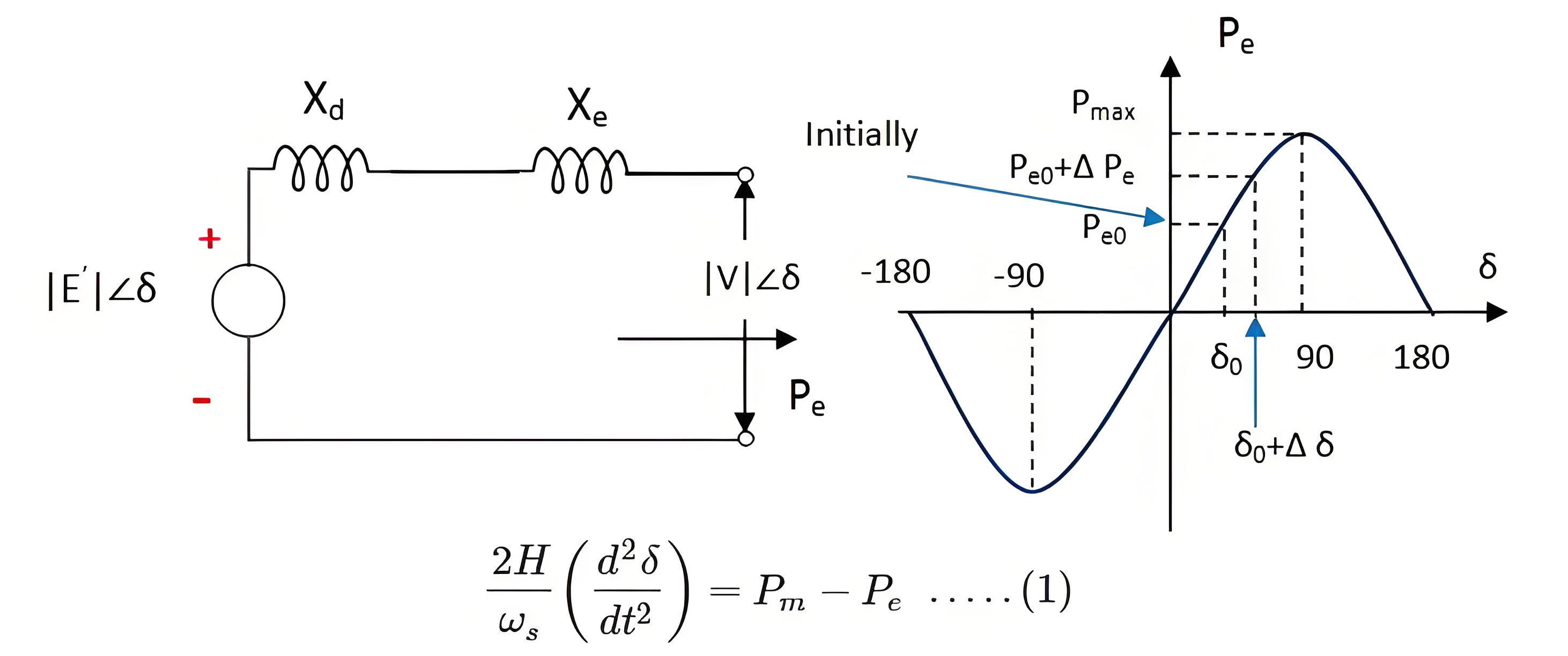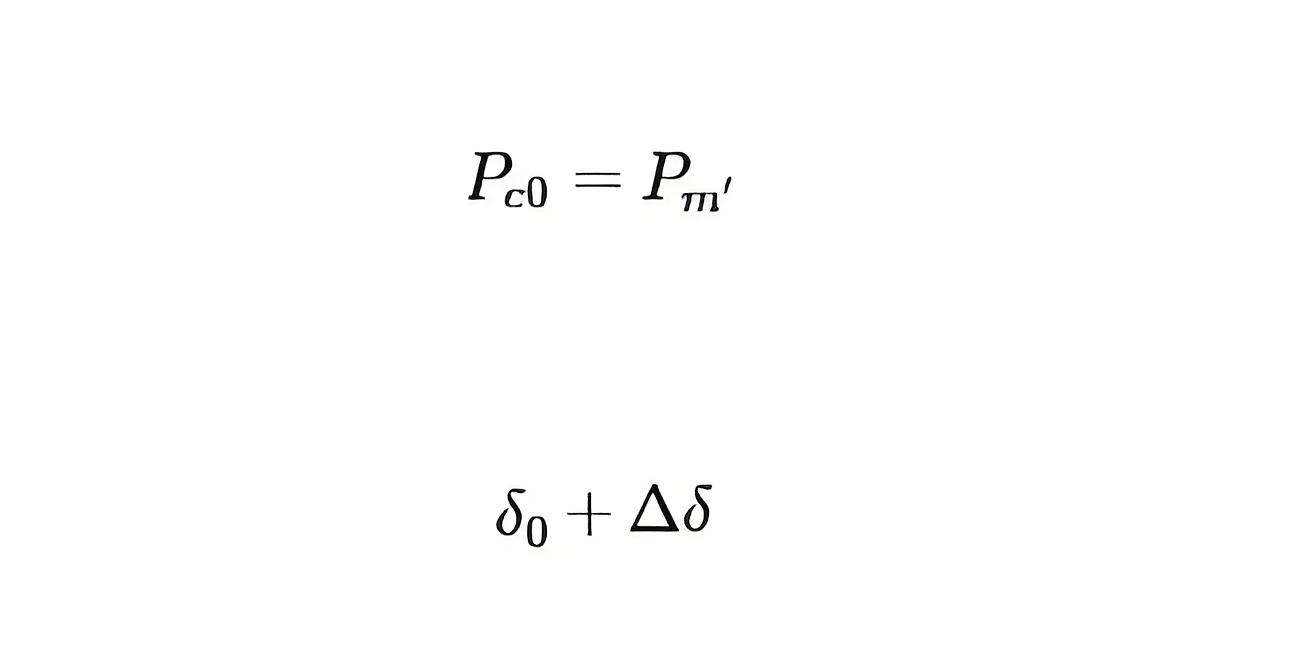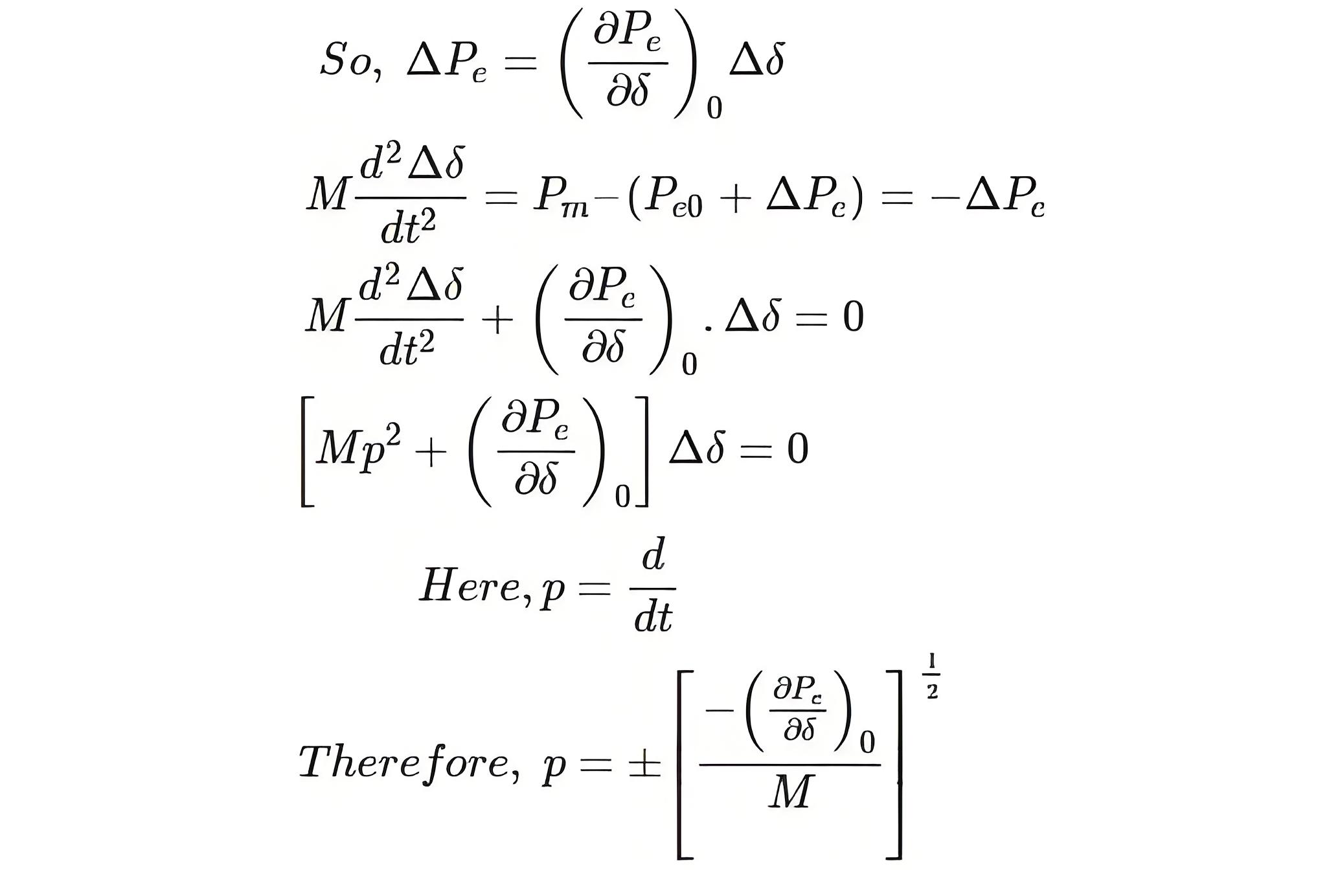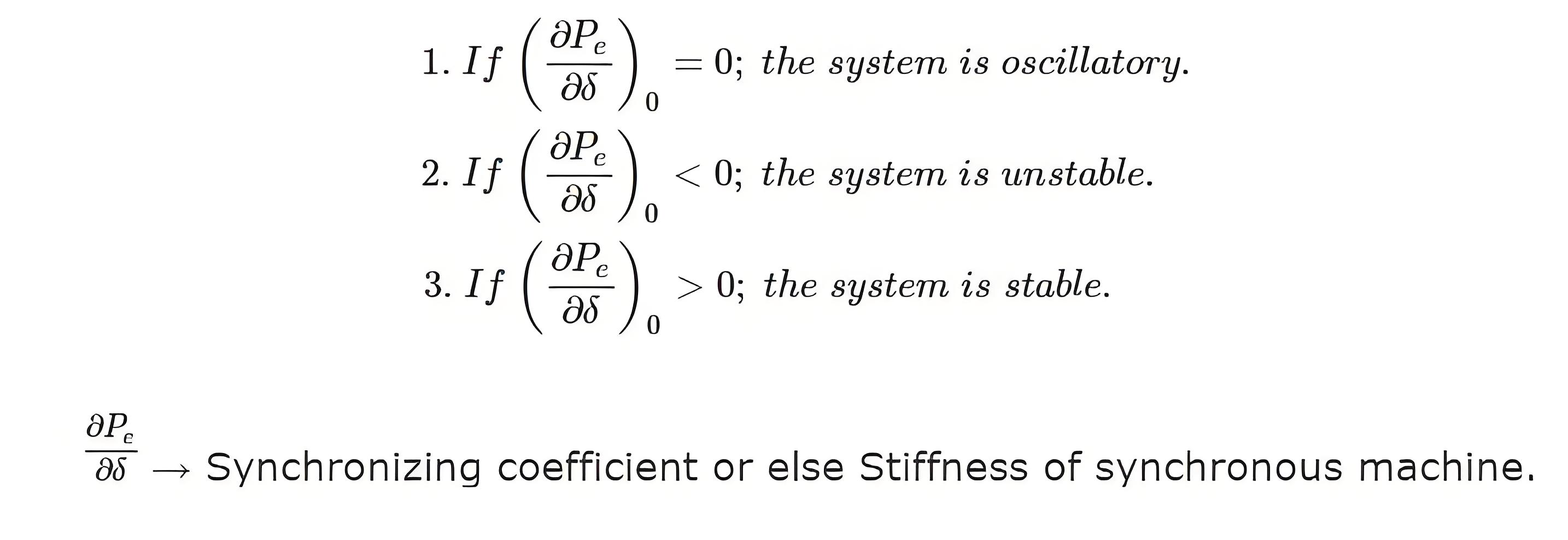Steady State Stability
Steady State Stability Definition
Steady state stability is the ability of a power system to remain in synchronism after small, gradual changes in operating conditions.
Steady State Stability
Steady state stability involves studying small, gradual changes in the system’s working state. It aims to find the maximum load the machine can handle before losing synchronism. This is done by slowly increasing the load.
The highest power that can be transferred to the system’s receiving end without losing synchronism is called the Steady State Stability limit.
The Swings equation is known by
P m → Mechanical power
Pe → Electrical power
δ → Load angle
H → Inertia constant
ωs → Synchronous speed


Consider the above system (figure above) which is operating on steady state power transfer of
Assume the power is increased by a small amount say Δ Pe. As a result, the rotor angle becomes from δ0.
p → frequency of oscillation.

The characteristic equation is used to determine the system stability due to small changes.

Importance of Steady State Stability
It determines the maximum load a power system can handle without losing synchronism.
Factors Affecting Stability
Important factors include mechanical power (Pm), electrical power (Pe), load angle (δ), inertia constant (H), and synchronous speed (ωs).
Conditions for Stability

Without loss of stability, the Maximum power transfer is given by
If the system operates below the steady state stability limit, it may oscillate for a long time if damping is low, posing a hazard to system security. To maintain the steady state stability limit, the voltage (|Vt|) should be kept constant for each load by adjusting the excitation.

A system can never be operated higher than its steady state stability limit but it can operate beyond the transient stability limit.
By reducing the X (reactance) or by raising the |E| or by increasing the |V|, the improvement of steady state stability limit of the system is possible.
Two systems to improve the stability limit are quick excitation voltage and higher excitation voltage.
To reduce the X in the transmission line which is having high reactance, we can employ parallel line.
Improving Stability
Methods to improve stability include reducing reactance (X), increasing excitation voltage (|E|), and using parallel lines in high reactance transmission lines.
The Electricity Encyclopedia is dedicated to accelerating the dissemination and application of electricity knowledge and adding impetus to the development and innovation of the electricity industry.













